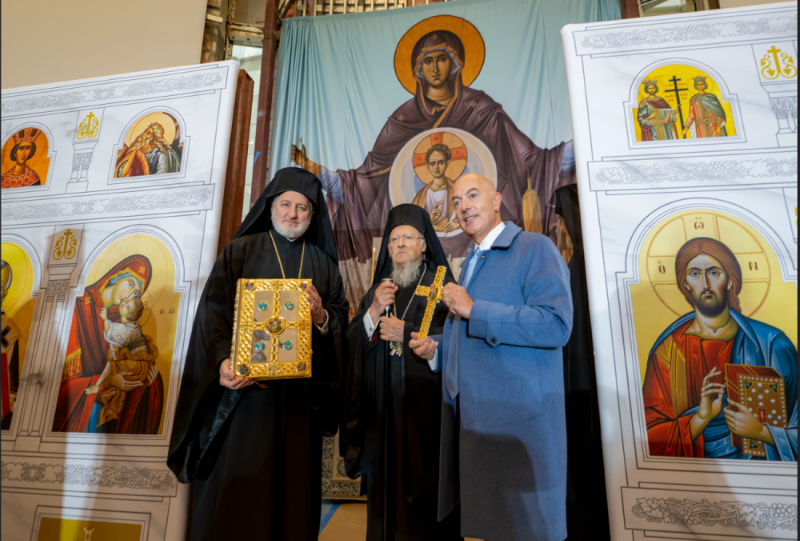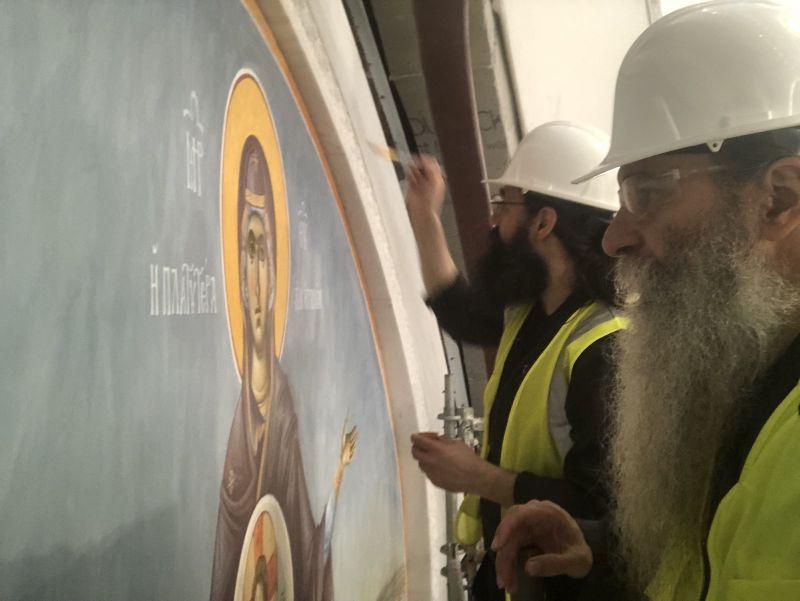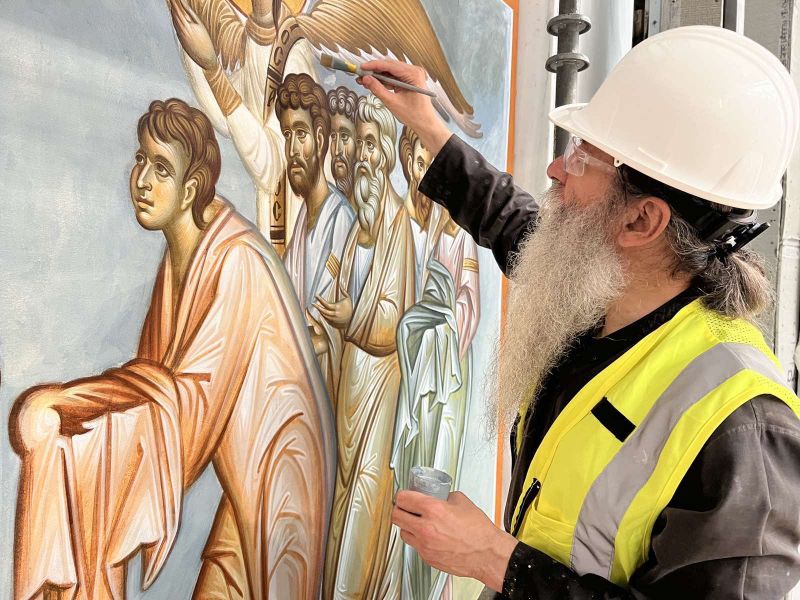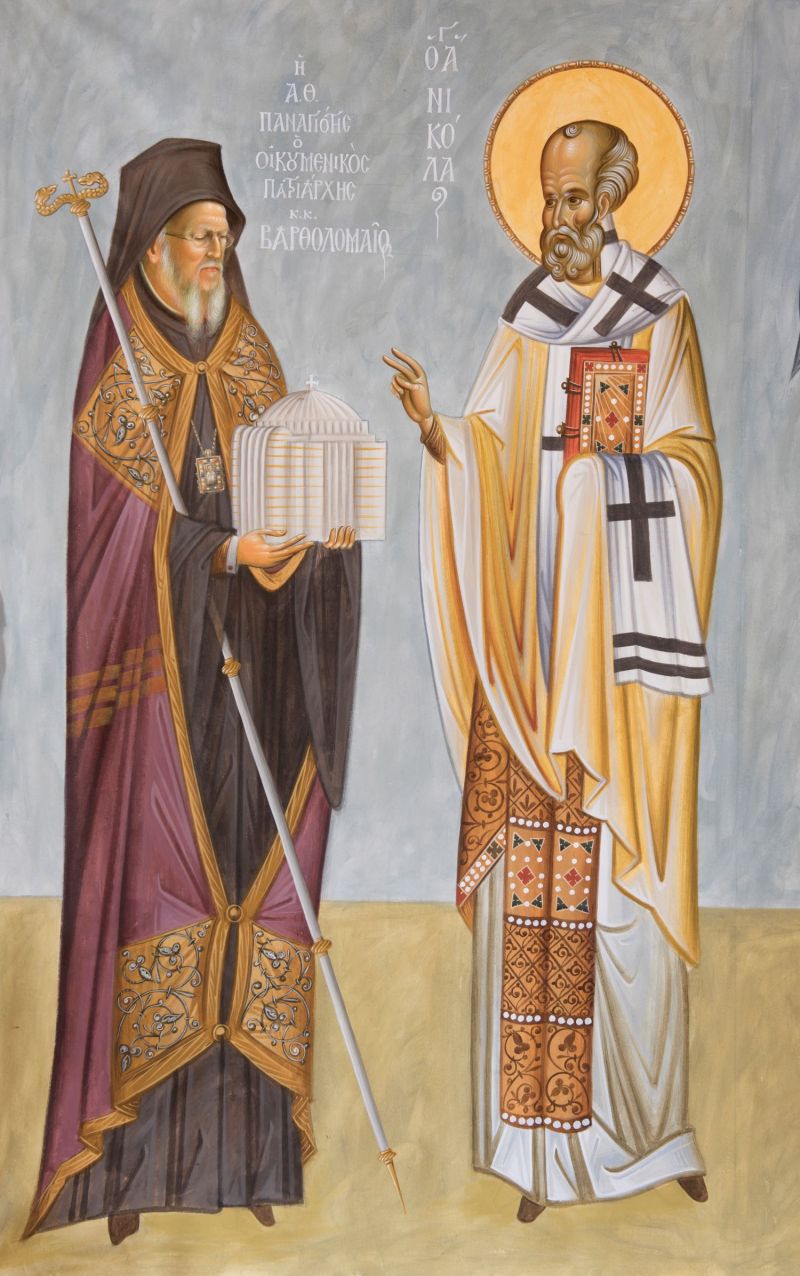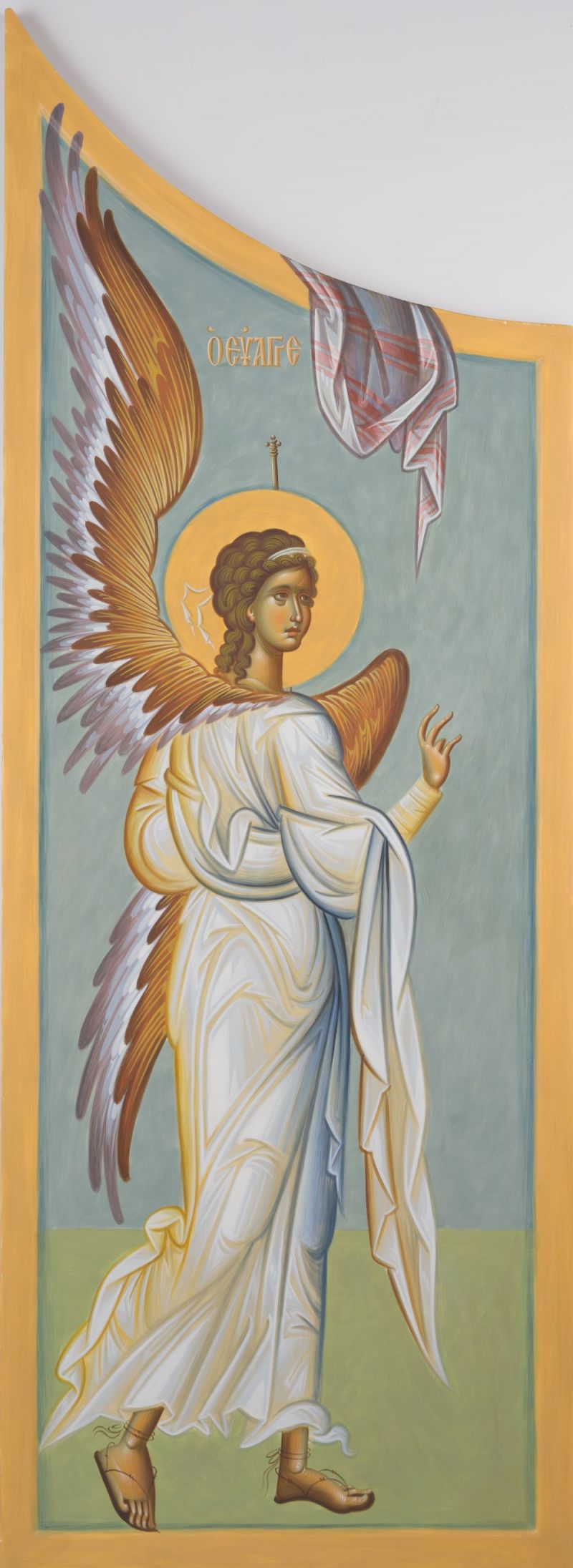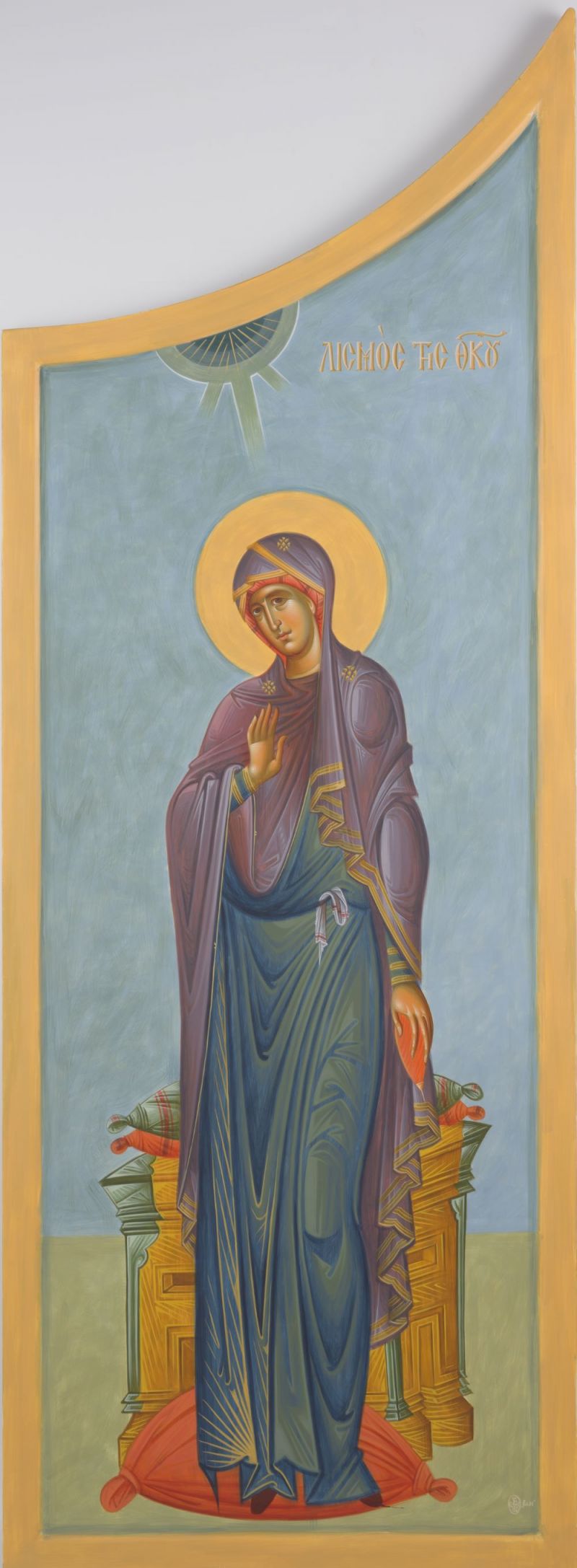Father Loukas from the Holy Monastery of Xenophontos, who undertook the important and arduous task of painting the national pilgrimage, speaks to
By Marina Zioziou
The Holy Church of Saint Nicholas at Point Zero, the national pilgrimage, opens its doors to the faithful on the Independence Day of the United States of America on the 4th of July.
It has been designated as the “National Shrine” of the Greek Orthodox church, which radiates the traditions and ritual of the Orthodox faith in the nerve center, the heart of New York’s business transactions. A place of worship and universal invitation to worship, another monument for the redemption and repose of the souls that scarred the blood-stained Ground Zero.
At the point where one of the greatest dramas of the beginning of the 21st century took place, the new Agios Nikolaos rose from the ashes of the historic Holy Church of Agios Nikolaos as a beacon of hope and unity. Unity of peoples and religions.
The construction of the church of Agios Nikolaos was not self-evident from the beginning. After many years of processes between the Port Authorities of the area, the foundation of the Temple took place on October 18, 2014.
As stated in the archdiocesan circular for the 4th of July, o Archbishop of America Elpidophoros“this is an extremely important stage in the history of the Archdiocese and marks the beginning of the events to complete 100 years since the establishment of the first and most important Province of our Ecumenical Patriarchate in the Diaspora. The choice of the 4th of July to hold the inauguration was made to emphasize the fact that the rebuilding of St. Nicholas and its dedication as a place of pilgrimage for the entire American people is an act of rebirth and freedom».
The imposing and glittering monumental symbol, which reproduces the vocabulary of Orthodoxy, bears the signature of the famous Spanish architect Santiago Calatrava. The architecture of the church gives a special basis to the white marble, which allows the light to emerge from within and thus illuminate the church from its interior. Santiago Calatrava, for the creation of this religious sanctuary, studied many churches both in Greece and abroad. Having as its main model the Hagia Sophia and with influences from the Rotunda (Agios Georgios) of Thessaloniki, but also from Agios Sotiras in Chora, today’s Karige Mosque in Turkey, ended up in the design of Agios Nikolaos.
As he had said Ecumenical Patriarch Bartholomew at the tyrannical ceremony of I. N. of Agios Nikolaos at Simeio Miden, “we congratulate and thank all those who contributed to make the dream come true. To turn the works of darkness and fanaticism into works of light, love, hope, perspective. We believe in the Lord, who makes everything empty, new, hopeful».
The rebuilding of the Temple had to overcome major financial and bureaucratic obstacles, which led to delays of many years. It cost $85 million to build, which was raised through donations.
However, what perhaps not many people know is that even the canonization of the Church of Agios Nikolaos – by decision of the Archbishop of America Elpidophoros – was done by two monks of Mount Athos. The Saint Fathers Luke and Pachomius from Holy Monastery of Xenophon undertook the great and arduous task of canonizing the national pilgrimage to Point Zero.
The monk Loukas Xenofontinos is a special case of a hagiographer, one of the most important contemporary hagiographers, whose work is inspired by theological reflections and concerns that shape his artistic identity at the same time.
Although he held his first paint brushes at the age of 10, the choice of his brother – Fr. Seraphim – to become a monk at Xenophon Monastery. His metaphysical searches, his talent for iconography, the conversations with his brother, his acquaintance with the elder at the monastery “dispelled” every cloud of doubt and Fr. Loukas let the light of monasticism enter his life. The old frescoes of Panselinos and Theophanes (14th-16th century) became his school and helped him immerse himself in the secrets of the art of iconography, but also gave him the impetus to spread his wings and create his own school.
“Agios Nikolaos, the small Naidrio, where the Greek immigrants built as a consolation for their new beginning, also met the same fate as the Twin Towers», Father Loukas reports to skai.grwho is currently in New York putting the finishing touches on his project.
“The Greek parish there, with the strength and determination that characterizes it, but above all with the grace and blessing of Agios Nikolaos, bypassed countless obstacles to be able to complete a vision that suddenly appeared, the restoration of the Temple. Now the diaspora is not a diseased presence of frightened immigrants of that time. That is why they wanted and succeeded in highlighting its position and its entire construction in an emblematic Temple, which will animate and fill the “being” of every Greek with pride and boasting in the Lord. May this Temple erase the weaknesses of our race and restore us in the eyes of the world“, he says excitedly.
In one of the hagiographies made by Fr. Loukas, Ecumenical Patriarch Bartholomew delivers the new Church into the hands of Saint Nicholas. It is a symbolic performance, which took him over a month to create. The result is unique, like every hagiography he has created. The hagiographies are first made on tarpaulins and then the two Saints travel to place them in the I. N. of Agios Nikolaos.
“We see Saint Nicholas receiving the glory he deserved. The walls of the Holy Temple were chosen to be decorated with representations of his life and miracles. By recounting the Despotic holidays, the Nativity of Christ, up to and including Pentecost, the message of the Orthodox faith is given. However, an attempt is made to combine these same events with today’s reality and the tragic memory of the spot“, points out the great iconographer from the Xenophon Monastery.
And it continues: “The victims of that fateful day, like all those who sacrificed themselves for the rescue of the trapped, expect their Resurrection from the Risen Lord. The Lord Almighty at the top of the radiant dome oversees the entire creation, while the Mother of the Lord and of all mankind, mediator between heaven and earth in the alcove of the Sanctuary, covers the entire city and the world with her mantle. Lower than the Virgin Mary, the Holy Communion of the Apostles, who come to the Lord to receive His Body and Blood. Below the Grand Hierarchs participate in the celebration of the Divine Liturgy. The Holy Plinth is separated from the main Church by a marble Templo, with images of Jesus Christ, the Virgin Mary, the Forerunner and Saint Nicholas. The portals are decorated as usual with the Annunciation, and the north and south gates with the Archangels Michael and Gabriel».
Father Loukas serves this art with modesty and humility, as befits a monk, but with exceptional quality in the result. “The fact that our Monastery is chosen for the canonization of the Church is a great blessing for us. We know very well that names are not needed and will not be mentioned. What is worth remembering is that Mount Athos, from the depths of its silence, is present in the culture, in the common faith and in the spiritual becoming of the world. What ultimately counts is not only material goods, but also something deeper, the spirit. The presence of Mount Athos in New York gives meaning to the inseparable relationship of Greeks around the world with the sanctuaries and relics of our race“, adds the monk Loukas Xenofontinos.
View the news feed and get the latest news.


